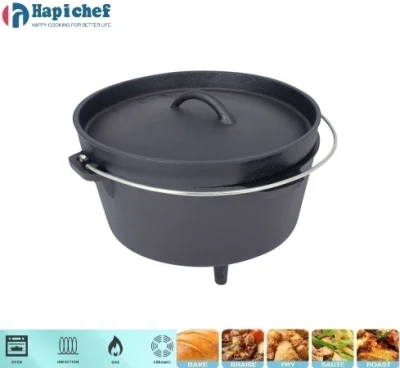Best Cast Iron Pans for Deep Frying Features and Recommendations
The Versatility of Cast Iron Pans for Deep Frying
When it comes to deep frying, many home cooks often overlook the humble cast iron pan. Traditionally associated with stovetop cooking and baking, cast iron pans possess a unique set of properties that make them exceptional for frying a variety of foods. Their excellent heat retention, even distribution, and ability to reach high temperatures make them an ideal choice for crispy, golden-brown results.
One of the primary benefits of using a cast iron pan for deep frying is its heat retention capabilities. Unlike some modern non-stick pans that might cool quickly when food is added, cast iron maintains its temperature consistently. This is crucial for deep frying, as adding food can lower the temperature of the oil, leading to soggy results. With a cast iron pan, you can maintain the perfect frying temperature, which helps achieve that crispy exterior while locking in moisture.
Moreover, the even heat distribution of cast iron is essential for cooking food uniformly. When frying items like chicken, potatoes, or doughnuts, you want each piece to receive the same level of heat to ensure that they cook evenly. A cast iron pan distributes heat much more uniformly than other materials, reducing the chances of hotspots that can leave certain areas undercooked or burnt.
To successfully deep fry in a cast iron pan, it’s vital to choose the right size for your cooking needs. A larger pan allows you to fry more food at once without overcrowding, which is key to maintaining that all-important temperature. It’s also important to select an appropriate oil with a high smoke point, such as peanut or canola oil, as cast iron can reach and maintain high temperatures effectively.
cast iron pan for deep frying

Before you begin frying, it’s crucial to ensure your cast iron pan is properly seasoned. A well-seasoned pan not only provides a natural non-stick surface but also helps to prevent the food from sticking and creating a mess. Regular maintenance of the seasoning will enhance the performance of the pan and improve the overall cooking experience.
Once your oil is heated to the right temperature (usually around 350-375°F), carefully lower your food into the oil. It’s important to work in batches to avoid overcrowding the pan. This will help maintain the oil temperature and allow the food to cook properly. Fry until golden and crispy, then use a slotted spoon to remove the food and place it on a rack or paper towels to drain excess oil.
After frying, cleaning a cast iron pan is simple but important. Avoid soap; instead, wipe it down with a paper towel and rinse with hot water. For stubborn bits, use a non-metal scrubber. Once cleaned, dry the pan thoroughly and apply a light layer of oil to maintain the seasoning.
In conclusion, while cast iron pans may traditionally be associated with frying eggs or baking cornbread, they shine brightly as deep frying tools. Their heat retention, even cooking, and ability to reach high temperatures make them perfect for achieving that coveted crispiness. With proper care, a cast iron pan can elevate your frying game and bring delicious results to your kitchen. Whether you’re preparing a family feast or a casual meal, consider reaching for your cast iron pan for deep frying endeavors!
-
Transform Your Kitchen with Big Iron Cast Wok CraftsmanshipNewsAug.05,2025
-
Traditional Cooking with Cast Iron Woks and Pots with HandlesNewsAug.05,2025
-
Outdoor and Indoor Cooking with Cast Iron Wok MasteryNewsAug.05,2025
-
Maximize Outdoor Cooking Versatility with Premium Cast Iron WoksNewsAug.05,2025
-
Master Traditional Cooking with a Chinese Cast Iron WokNewsAug.05,2025
-
Culinary Power with High-Performance Cast Iron WoksNewsAug.05,2025
-
Why Every Kitchen Needs a Casserole Cast Iron DishNewsJun.24,2025
